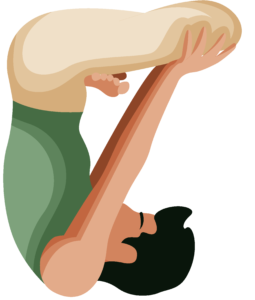Upward Lotus (Urdhva Padmasana)
Pose Overview
| Common Name | Upward Lotus |
| Traditional Sanskrit Name | Urdhva Padmasana |
| Sanskrit Name Pronunciation | oord-vah pad-mah-SAH-nah |
| Pose Difficulty | Expert |
| Drishti
Drishti is the gaze or visual focus point during yoga poses.
Learn more about Drishti |
Straight ahead or the nose |
Upward Lotus Pose, or Urdhva Padmasana, is a challenging standing yoga pose that requires strength, flexibility, and balance. This pose is often used as a transition between other poses and is considered to be an advanced pose. It is said to have originated in ancient India, where it was used as a way to prepare the body for meditation and spiritual practices.
Benefits of Upward Lotus
Upward Lotus Pose is a full-body exercise that can help to improve strength, flexibility, and balance. It is particularly good for strengthening the legs and core, which can help to improve posture and reduce the risk of injury. Additionally, this pose is said to help to stimulate the abdominal organs, which can aid in digestion and elimination.
How to Enter Upward Lotus
Begin in a standing position with your feet together. Bend your left knee and place your left foot on your right thigh, with the heel close to the pelvis. Bend your right knee and place your right foot on your left thigh, with the heel close to the pelvis. Place your hands on your hips and lift your chest. Slowly bring your hands together in front of your chest in a prayer position.
How to Exit Upward Lotus
Release your hands and lower them to your hips. Slowly lower your feet to the floor. Stand up straight and take a few breaths before repeating the pose on the other side.
Common Upward Lotus Modifications & Variations
To make this pose more accessible, you can use a wall or a chair for support. You can also use a strap around your feet to help you hold your legs in place.
Common Mistakes with Upward Lotus
Not keeping the feet close to the pelvis Not keeping the chest lifted
Safety Guidance
Be sure to warm up your muscles before attempting this pose. If you have any knee or back injuries, it is best to avoid this pose or to practice it with caution and under the guidance of a qualified instructor. Do not force your body into the pose, if you are not flexible enough yet, work on other stretches first

